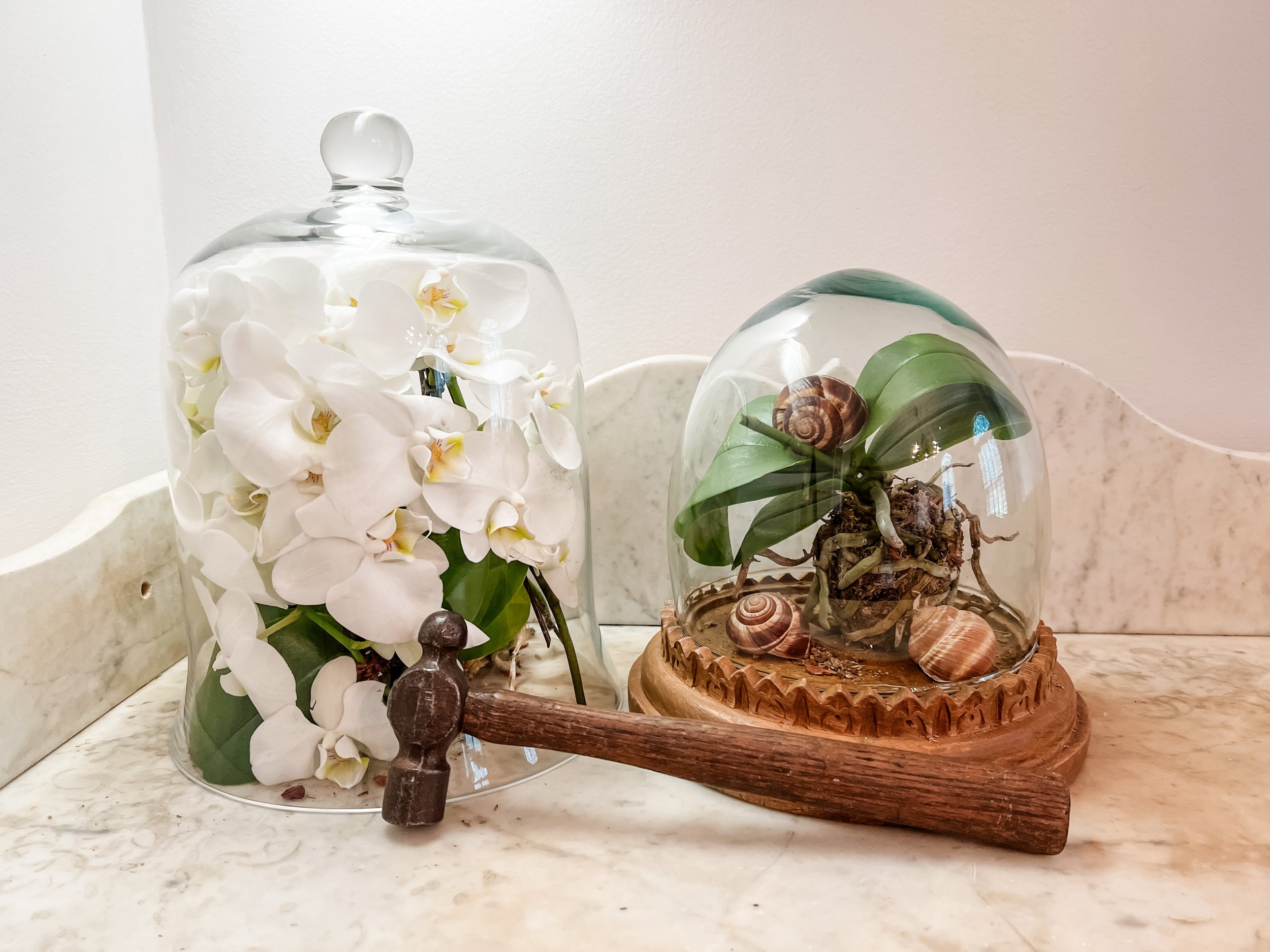
Beneath the Bell Jar
Art is personal.
You cannot create it without infusing a bit of yourself into the paint. So, why do I paint bell jars? Why do I trap peonies and orchids, butterflies, and snails?
One of my first memories as a child is of the hours I spent studying the cloche on my mother’s dresser. I remember being mesmerized by the dusty little world beneath that glass dome, a sort of undead menagerie of reincarnated flowers and stiff butterflies. I was born with a deep curiosity for the macabre, I've come to discover that most artists are. In my little suburban world of relentless normality, this one strange diversion captured my attention.
It was no wonder, then, that my favorite book soon became Sylvia Plath's 'The Bell Jar'—a macabre masterpiece detailing the peril of being born a strange woman in the relentlessly normal world of 1950’s society.
In my series, 'Beneath the Cloche,' I draw on evocative symbolism to highlight the struggle of being caught in the bell jar. The bell jar can represent conformity and societal pressures, anything that saps the creative breath from your world and turns your bright blooms into a menagerie of the undead. We all have our bell jar.
In every piece, there is a mallet of sorts, sometimes it is an antique hammer or glass rod. It is an invitation to you, the viewer, to break the glass.”
The Process
-
Glazing + Underdrawing
To achieve Realism in still life painting one must first have a deep understanding of the subject’s shadows and highlights. For hundreds of years artists used the glazing process for this purpose. Using a monochromatic glaze of oil paint+turpentine, the artist can lay a foundation of dark shadows and pull out bright highlights.
-

Local Color
Once the glazing is complete it is time to take the painting to local color. With thin layers and soft strokes the true colors are added, holding true to the darkest darks and the lightest lights established in glazing process. -

Final Layer
At last, we’ve reached the final layer where we push the local color further and add the true star of the show: the highlights. To achieve realism, one rule to live by here is no unmixed pigment- that is to say no paint straight out of the tube goes onto the board. Every color must be mixed. Even the brightest white highlights are mixed with lemon yellow, cerulean, cadmium red, or whatever hue the subject calls for. On the painting above, The Maid of Orleans, though the pitcher, the walls, the wainscoting and the iris are ‘white’, there is not a drop of pure white paint on the board.
Taylor Wiedemann
Wiedemann studied still life painting under Philip Jackson in the BFA program at the University of Mississippi. She studied painting and art history at Florence University of the Arts in Florence, Italy. There she discovered the techniques of the renaissance masters and still looks to them for deeper understand of the process. She resides in Nashville, TN, with her husband and two children. She exhibits her work across the United States. Look for her painting, Silvia in the Loveland Museum of Art and Culture this fall.














